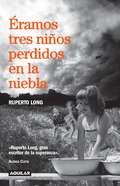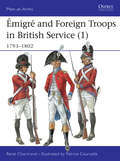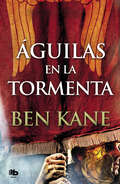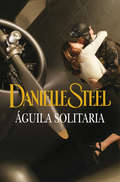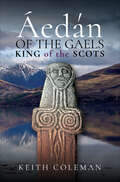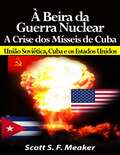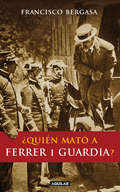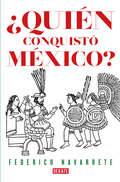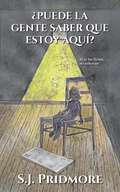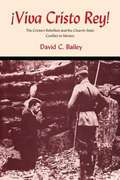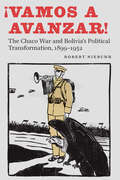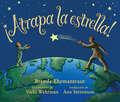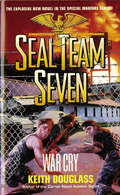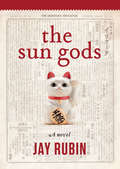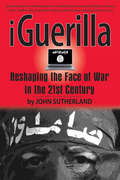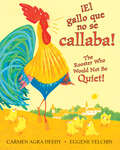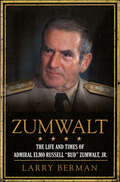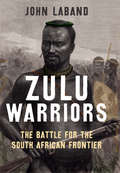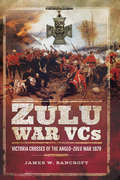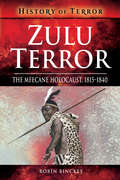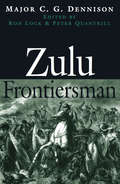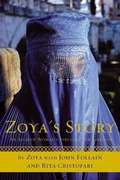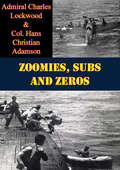- Table View
- List View
Éramos tres niños perdidos en la niebla
by Ruperto LongInspirado en hechos reales, con el Holocausto y la Segunda Guerra Mundial como telón de fondo, Ruperto Long construye una novela apasionante y emotiva, cuyo ritmo vertiginoso no da respiro, y que es sin duda una celebración del poder de la amistad, la solidaridad, el amor y la tenacidad, cuando se enfrentan a circunstancias extraordinarias. En el verano de 1938, tres niños procedentes de diferentes regiones de Europa comparten juegos y amistad durante sus vacaciones. Sin embargo, saben que una amenazadora tormenta se cierne sobre ellos y sus familias. Deciden entonces hacer una promesa indeleble: serán amigos para siempre, no importa lo que pase. Los años siguientes estarán marcados por acontecimientos increíbles, hechos de inmensa crueldad que jalonan una de las épocas más trágicas en la historia de la humanidad. Aquellos amigos del verano, Lizzy, Alex y Riki, se verán teniendo que sobrellevar desafíos que pondrán a prueba su coraje, voluntad y entereza. Son niños empujados a sobrevivir en un mundo de adultos al que no pueden comprender, signado por el odio y la injusticia. El camino que cada uno de ellos recorrerá deberá sortear dificultades y penurias; pero también conocerán el abrazo de aquellos héroes anónimos que se jugarán la vida por ayudarlos. Este libro es asimismo un homenaje a todos ellos.
Émigré and Foreign Troops in British Service
by Rene Chartrand Patrice CourcelleFollowing the Revolution in 1789, members of the aristocracy were increasingly persecuted, and many of them fled abroad. These exiles became known collectively as 'émigrés', and despite initial confusions and indecision, many of them were taken into British service. This fine text by René Chartrand examines the organisation, uniforms and insignia of the Émigré troops in British service from 1793 to 1802, accompanied by plenty of illustrations including eight full page colour plates by Patrice Courcelle.
Águilas en la tormenta
by Ben KaneLa magnífica conclusión de la trilogía «Águilas de Roma», la saga de género histórico que relata de forma emocionante uno de los acontecimientos más relevantes de la historia del Imperio Romano. Año 15 d.C. El jefe Arminio ha sido derrotado, una de las águilas romanas recuperadas y miles de guerreros de las tribus de Germania masacrados. Sin embargo, para el centurión Lucius Tullus estas victorias no son, ni mucho menos, suficientes. No descansará hasta que el propio Arminio muera, el águila de su legión sea recuperada y las tribus enemigas totalmente exterminadas. Por su parte, Arminio, taimado y valiente, también busca venganza. Más carismático que nunca, consigue reunir otro gran ejército tribal que acosará a los romanos a lo largo y ancho de sus territorios. Muy pronto, Tullus se encuentra en un hervidero de violencia, traiciones y peligros. Y la misión para recuperar el águila de su legión se revelará como la más peligrosa de todas. Reseña:«Ben Kane es un maestro de la ficción militar. Una trilogía poderosa.»The Times
Águilas en la tormenta
by Ben KaneLa magnífica conclusión de la trilogía «Águilas de Roma», la saga de género histórico que relata de forma emocionante uno de los acontecimientos más relevantes de la historia del Imperio Romano. Año 15 d.C. El jefe Arminio ha sido derrotado, una de las águilas romanas recuperadas y miles de guerreros de las tribus de Germania masacrados. Sin embargo, para el centurión Lucius Tullus estas victorias no son, ni mucho menos, suficientes. No descansará hasta que el propio Arminio muera, el águila de su legión sea recuperada y las tribus enemigas totalmente exterminadas. Por su parte, Arminio, taimado y valiente, también busca venganza. Más carismático que nunca, consigue reunir otro gran ejército tribal que acosará a los romanos a lo largo y ancho de sus territorios. Muy pronto, Tullus se encuentra en un hervidero de violencia, traiciones y peligros. Y la misión para recuperar el águila de su legión se revelará como la más peligrosa de todas. Reseña:«Ben Kane es un maestro de la ficción militar. Una trilogía poderosa.»The Times
Águila solitaria
by Danielle SteelRomance y aventura, desde los tiempos de la Segunda Guerra Mundial, cuando la joven Kate se enamora perdidamente de un intrépido aviador. Desde la noche que lo conoció, en un baile de sociedad en diciembre de 1940, Kate Jamison supo que Joe Allbright había entrado en su vida para no salir nunca más. De inmediato se sintió atraída por aquel famoso aviador mayor que ella, en quien adivinó a alguien especial, poco corriente, brillante y lejano a un tiempo, como una estrella. En los meses que siguieron a su primer encuentro, un vínculo se fue estrechando entre ambos, tan fuerte que ni el estallido de la guerra, ni las peligrosas misiones de Joe bajo el cielo de Europa, ni la oposición de la familia de Kate podrían romper. Pero, al acabar la guerra, Kate tuvo que aceptar que su deseo de casarse y formar una familia no tenía cabida en la vida y los sueños de Joe, cuya auténtica pasión era volar. Debía tomar una decisión, encontrar su propio camino... sin saber que nadie puede escapar a su destino.
Áedán of the Gaels: King of the Scots
by Keith ColemanThis is the first full-length work devoted to Áedán mac Gabráin, 6th century king of Dál Riata in Scotland. An associate of the famous St. Columba, he was the first recorded king to be ordained in the British Isles and was the most powerful ruler in his generation. His astonishing military reach took him from Orkney, Pictland, Ireland, Northumbria and the Isle of Man. This book details his dominant career, which came to a shattering end after decades of warfare at the Battle of Degsaston in AD 603. Beyond the record of warfare, there is a unique and tantalising accumulation of legend concerning Áedán, from stories about his birth, to tales of him in battle with Irish heroes. English sources mention him and he is one of the few Gaelic kings to feature prominently in Welsh tradition, where he is remembered as a uniquely powerful player in the north of Britain. Modern writers highlight Áedán as the father of a prince named Arthur, which has led to his place in Arthurian studies. Áedán’s prominence in his era qualifies him as a fascinating figure, whose life and legend are accessibly explored in this exciting account of this unique ruler.
À beira da Guerra Nuclear: Crise dos Mísseis de Cuba - União Soviética, Cuba e os Estados Unidos
by Scott S. F. Meaker Aleff E. Oliveira & Jonathan R. SantosDurante os anos 50, o grande medo era a guerra nuclear. Do ponto de vista da União Soviética, ter um reduto comunista tão perto da fronteira norte-americana era um sonho realizado. Até o início dos anos 60, houve uma forte corrente de tensão entre os americanos e os soviéticos. Além da perda desastrosa de vidas e dignidade na Baía dos Porcos, muitas outras coisas ocorreram. A linha foi firmemente traçada na areia. O mundo estava à beira de uma guerra nuclear.
¿Quién mató a Ferrer i Guardia?
by Francisco BergasaEn un tiempo en el que la memoria histórica reclama un lugar parecía obligado aprovechar el centenario de aquel escándalo para reivindicar la inocencia de su protagonista. El 13 de octubre de 1909, hace ahora exactamente cien años, moría fusilado en el castillo de Montjuïc el pedagogo, anarquista y librepensador catalán Francisco Ferrer i Guardia, condenado a la última pena en virtud de una polémica sentencia que lo consideró «autor y máximo responsable» de los sucesos revolucionarios conocidos históricamente como la Semana Trágica. Con la ejecución de Ferrer i Guardia la España dogmática e intransigente, encarnada en el Gobierno de Maura, pretendió saldar, en un controvertido ajuste de cuentas, la deuda que con ella tenía contraída el creador de la Escuela Moderna, cuyas ideas políticas y pedagógicas representaban un ataque frontal a los valores defendidos por el sistema canovista. Y para ello no dudó en instruir un proceso arbitrario y tendencioso, viciado en todos y cada uno de sus autos, y falto de las más indispensables garantías jurídicas, que desembocó en un fallo escandaloso, considerado por historiadores y juristas como uno de los más flagrantes errores judiciales de la historia moderna. Ferrer i Guardia fue la cabeza de turco elegida por quienes defendían el eufemismo de la «revolución desde arriba» para advertir a los que la intentaban «desde abajo» del alto coste que suponía disentir de un régimen ineficaz y caduco empeñado en perpetuar sus prerrogativas, al que la injusta muerte de aquél dio el golpe de gracia en el proceso de su desintegración definitiva. En un tiempo en el que la memoria histórica reclama un lugar junto a la verdad oficial, dispuesta siempre interesadamente a olvidarla, parecía obligado aprovechar el centenario de aquel escándalo judicial para reivindicar la inocencia de su protagonista. Y acercar, a la vez, hasta el lector toda una suerte de prácticas perversas (la instrumentalización de la Justicia, la intromisión de la Iglesia en el orden civil, el servicio de la propaganda mediática al descrédito del adversario o la inevitable y perenne confrontación de las dos Españas), tan presentes en la causa aquí investigada, y que continúan plenamente vigentes un siglo después de aquellos hechos.
¿Quién conquistó México?
by Federico NavarreteLos españoles no conquistaron México-Tenochtitlan: fueron decenas de miles de indígenas, movidos por sus propios intereses y encabezados por líderes que, sistemáticamente, condujeron a Cortés a cumplir sus propios fines con todo éxito. En este ensayo -tan certero como revolucionario y agudo- el historiador Federico Navarrete hace un repaso vibrante y seductor de lo ocurrido hace exactamente 500 años: desmonta los poderosos mitos creados a lo largo de las centurias, explica la complejidad del proceso colonizador y ofrece decenas de argumentos y razones que permiten responder, por fin, una pregunta que todavía le duele a nuestra identidad: ¿quién conquistó México? Al responderla, se entiende que la visión simplista de la conquista española surgió mucho tiempo después, y ha servido, hasta la fecha, para fomentar la discriminación y la desigualdad en México.
¿Puede la gente saber que estoy aquí?
by S. J. PridmoreLa niña no entiende por qué le ha tocado vivir una vida tan cruel. Mientras, una joven madre se ve obligada a tomar una decisión imposible para salvar su vida y la de sus hijos. Ambas se encuentran solas en medio de un mundo hostil. Necesitan seguir libres si quieren sobrevivir. Porque jamás volverán si se las llevan, y es posible que el impetuoso espíritu que comparten no sea suficiente. Será necesaria la intervención de amables extraños y un golpe de suerte si han de tener alguna posibilidad de encontrar santuario. Sin embargo, son muchas las adversidades. Y no todos los extraños serán amables. Basado en una historia real.
¡Viva Cristo Rey! The Cristero Rebellion and the Church-State Conflict in Mexico
by David C. BaileyBetween 1926 and 1929, thousands of Mexicans fought and died in an attempt to overthrow the government of their country. They were the Cristeros, so called because of their battle cry, ¡Viva Cristo Rey!—Long Live Christ the King! The Cristero rebellion and the church-state conflict remain one of the most controversial subjects in Mexican history, and much of the writing on it is emotional polemic. David C. Bailey, basing his study on the most important published and unpublished sources available, strikes a balance between objective reporting and analysis. This book depicts a national calamity in which sincere people followed their convictions to often tragic ends.
¡Vamos a avanzar!: The Chaco War and Bolivia's Political Transformation, 1899–1952
by Robert NiebuhrIn ¡Vamos a avanzar! Robert Niebuhr argues that despite widespread corruption, a lack of skills, and failed policies, Bolivian leaders in the first half of the twentieth century created a modern state because of the profound role of warfare over the Chaco. When President Daniel Salamanca hastily thrust his isolated and poverty-stricken country into the devastation of the Chaco War against Paraguay in 1932, he unleashed a number of forces that had been brewing inside and outside of Bolivia, all of which combined to bring Bolivia a truly modern national identity and state-building program. This conflict was the defining moment whereby rhetoric and populism took on a broader meaning among the newly mobile populace, especially the Indigenous war veterans, as the Bolivians proclaimed, ¡Vamos a avanzar! (Let&’s move forward!). With the final revolution of 1952, politics in Bolivia became more modern than they had been in the period of the Chaco War or during the populist leanings of all post-1899 governments. Niebuhr offers a fresh contribution, showing the importance of the turbulent populist politics of the period after 1899 and the significance of the Chaco War as the most influential revolutionary event in modern Bolivian history.
¡Atrapa la estrella!
by Brenda Ehrmantraut—No será el mismo juego que solíamos hacer, sino algo muy especial cada atardecer. Cuando un soldado se tiene que ir al otro lado del mundo por su trabajo, él y su hijo juegan a tirar y atrapar la Estrella del Norte. ¡Atrapa la estrella! es una historia clásica que ayudará a las familias a sentirse cerca, aun cuando están lejos. La edición original en inglés, Night Catch, ha sido un título preferido desde el 2005. “... ¡Night Catch es lo mejor de lo mejor!” —Sally Ann Zoll, Directora General, United Through Reading “... un libro elemental en nuestro programa para padres ... ¡Lo recomendamos con entusiasmo!” —Military Child Education Coalition ~ “Not ball as usual in the park, but something special after dark.” When a soldier has to go to the other side of the world for his work, he and his son play a game with the North Star. ¡Atrapa la estrella! is a timeless story that helps families feel connected, even when they are separated. The English edition, Night Catch, has been a favorite since 2005! “... Night Catch is the best of the best! —Sally Ann Zoll, CEO, United Through Reading “... a staple in our Parent to Parent Program … We enthusiastically recommend it! —Military Child Education Coalition
war cry (Seal Team Seven #9)
by Keith DouglassSince 1953, the no-man's-land between North and South Korea has remained in a permanent stalemate...until now. As the vice president of the United States and several congressmen make an official inspection of the American border troops, the North Koreans launch a lightning-fast offensive with the goal of uniting Korea under their power. The officials are all captured, and held as prisoners of war. It's up to Lieutenant Blake Murdock and his SEALs to pull off a daring rescue behind enemy lines. But there is more bloody work to be done. In a day-to-day dance with death, the SEAL team proves again and again why they're the best. Then they get the orders they've been waiting for, orders that can stop the bloodshed: Hunt down the North Korean generals who instigated the war... and take them out!
the sun gods
by Jay RubinArriving in Seattle on the eve of World War II, Japanese-born Mitsuko falls for Tom, a widowed pastor, and becomes surrogate mother to his fair-haired American toddler, Bill. But the bombing of Pearl Harbor strains the newly formed family as U. S. government mandates and Tom’s growing discomfort with all things Japanese force Mitsuko and young Bill to leave Seattle and Tom behind for the Minidoka Internment Camp, unsure if they will ever return. Two decades later, memories of Minidoka and long-lost Mitsuko haunt Bill, sparking an arduous journey that leads him from Seattle’s International District to newly reconstructed Japan to find his Japanese mother and learn the truth about their shared past. Jay Rubin is one of the foremost English-language translators of Japanese literature. He is best known for his numerous translations of works by Haruki Murakami, Japan’s leading contemporary novelist, and the study Haruki Murakami and the Music of Words. Most recently, he has translated the first two books of Murakami’s bestselling novel, 1Q84. In addition, Rubin’s Making Sense of Japanese remains one the widely used guides to Japanese language studies. Jay Rubin received his PhD in Japanese literature from the University of Chicago and taught at Harvard University and the University of Washington. He lives near Seattle with his wife.
iGuerilla: Reshaping the Face of War in the 21st Century
by John SutherlandiGuerilla: Reshaping the Face of War in the 21st Century, is a book in the tradition of Thomas Paine's Common Sense and Winston Churchill's The Gathering Storm. Like Paine, author John Sutherland alerts those in the large populace of the United States and Western Europe that an international war is underway. And like Churchill, he traces the trails of war to the present to bring an understanding of the changing nature of war and the psychology and goals of those who conduct it, and why they conduct it. The book is a projection of the future and delves into the manner in which the future will unveil. It is an illustration too, of how the war is being conducted, by those known as jihadists and the manner in which they use technology to return modern society to a dark age they call the Caliphate. The author describes in detail the weaknesses of those jihadists and how they can be defeated, and the manner that will quiet them for decades to come.
gallo que no se callaba!, ¡El / The Rooster Who Would Not Be Quiet!
by Carmen Agra DeedyPura Belpre Honoree Carmen Agra Deedy and Newbery Honor-book author/illustrator Eugene Yelchin have created a powerful tale that celebrates the spirit of freedom.La Paz es un pueblo alegre, pero ruidoso. Un poco de silencio no le vendría nada mal. Así que la gente del pueblo elige a don Pepe de alcalde para que resuelva el problema del ruido. Muy pronto, se prohíbe cantar en cualquier sitio. ¡Y hasta las teteras tienen miedo de pitar!Pero un gallito muy ruidoso, a quien le importa un pito las reglas del alcalde, sigue haciendo lo que los gallos hacen desde que nacen: ¡cantar!La Paz is a happy, but noisy village. A little peace and quiet would make it just right. So the villagers elect the bossy Don Pepe as their mayor. Before long, singing of any kind is outlawed. Even the teakettle is afraid to whistle!But there is one noisy rooster who doesn't give two mangos about this mayor's silly rules. Instead, he does what roosters were born to do.
Zumwalt: The Life and Times of Admiral Elmo Russell "Bud" Zumwalt, Jr.
by Larry BermanAdmiral Elmo Russell Zumwalt, Jr., the charismatic chief of naval operations (CNO) and "the navy's most popular leader since WWII" (Time), was a man who embodied honor, courage, and commitment. In a career spanning forty years, he rose to the top echelon of the U.S. Navy as a commander of all navy forces in Vietnam and then as CNO from 1970 to 1974. His tenure came at a time of scandal and tumult, from the Soviets' challenge to the U.S. for naval supremacy and a duplicitous endgame in Vietnam to Watergate and an admirals' spy ring.Unlike many other senior naval officers, Zumwalt successfully enacted radical change, including the integration of the most racist branch of the military—an achievement that made him the target of bitter personal recriminations. His fight to modernize a technologically obsolete fleet pitted him against such formidable adversaries as Henry Kissinger and Hyman Rickover. Ultimately, Zumwalt created a more egalitarian navy as well as a smaller modernized fleet better prepared to cope with a changing world.But Zumwalt's professional success was marred by personal loss, including the unwitting role he played in his son's death from Agent Orange. Retiring from the service in 1974, Zumwalt spearheaded a citizen education and mobilization effort that helped thousands of Vietnam veterans secure reparations. That activism earned him the nation's highest civilian honor, the Presidential Medal of Freedom. Today Zumwalt's tombstone at the U.S. Naval Academy is inscribed with one word: "Reformer." Admiring yet evenhanded, Larry Berman's moving biography reminds us what leadership is and pays tribute to a man whose life reflected the best of America itself.
Zulu Warriors:The Battle for the South African Frontier
by John LabandToward the end of the nineteenth century, the British embarked on a concerted series of campaigns in South Africa. Within three years they waged five wars against African states with the intent of destroying their military might and political independence and unifying southern Africa under imperial control. This is the first work to tell the story of this cluster of conflicts as a single whole and to narrate the experiences of the militarily outmatched African societies.<P> Deftly fusing the widely differing European and African perspectives on events, John Laband details the fateful decisions of individual leaders and generals and explores why many Africans chose to join the British and colonial forces. The Xhosa, Zulu, and other African military cultures are brought to vivid life, showing how varying notions of warrior honor and manliness influenced the outcomes for African fighting men and their societies.
Zulu War VCs: Victoria Crosses of the Anglo-Zulu War, 1879
by James W. BancroftThe Anglo-Zulu War lasted only six months in 1879, but in that relatively short time twenty-three men were awarded the Victoria Cross for gallantry under most trying and dangerous circumstances. Zulu warriors gave no mercy and expected none in return, yet half of the awards were given to men who went back into the midst of fierce fighting to rescue stranded comrades, well-aware that they risked suffering a particularly brutal death.Two men received posthumous awards for their efforts to save the Queens color of their regiment after the disastrous engagement against overwhelming numbers of warriors at Isandlwana, and perhaps the most famous of all awards of the Victoria Cross were the eleven gained for the immortal defence of Rorkes Drift, the battle brought back to the public consciousness by the motion picture _Zulu!_The conflict has never left the publics imagination, and continues to stir hot debate among military historians and enthusiasts.With information compiled over four decades by James W. Bancroft, a well-known and respected historian and author of several publications on the subject, this book brings together more information about the men than has ever before been collected together in one publication.
Zulu Terror: The Mfecane Holocaust, 1815–1840 (History of Terror)
by Robin BinckesThe historian and author of The Great Trek recounts the devastating period of violence among indigenous peoples in early 19th century southern Africa. From 1815 to 1840, southeastern Africa experienced a devastating period of warfare between the Zulus, the Matabele, and other indigenous peoples. Though the causes of the unrest—which the Zulu called the Mfecane—are still debated by historians, we know that hundreds of thousands of lives lost. Some estimate the total number of deaths to be near two million. At the center of the turmoil was the Zulu Kingdom and its King Shaka, whose wars of expansion sparked mass migrations among smaller tribes. One of Shaka&’s lieutenants, Mzilikazi Khumalo, escaped execution and began a trail of destruction from Zululand north to the Highveld. Refugees from Mzilikazi&’s warpath then formed their own alliance—including with the Dutch-speaking Voortrekkers, arriving on their own &“Great Trek&” to escape British control. Finally defeated in 1836 by the Voortrekkers in a nine-day battle, Mzilikazi and his followers crossed the Limpopo River and founded the kingdom of the Matabele in what is now Zimbabwe.
Zulu Frontiersman
by Major C. G. DennisonIt was said of George Dennison that he had seen more active service in southern Africa than any other living man. An eminent soldier cast from a colonial mould of bitter experience, rather than of a formal military education, he was also a frontiersman equal in standing to any legendary figure of the American West. His military career saw him rise from an uncouth trooper with the Bloemfontein Rangers to, fifty years later, a distinguished officer whose advice was sought by the likes of Lord Kitchener, Sir Garnet Wolseley and other British military names of fame. During this time Dennison encountered many foes, some he would have known as neighbours, or men who had lately been his comrades-in-arms. He fought against Afrikaners, Dutchmen, Voortrekkers and the Boers. His black foes were also diverse; the stealthy Xhosa of the eastern Cape; the battle-axe wielding Basutos from their lofty kingdom in the clouds; the Transvaal baPedi, the masters of fortification, and most impressive of all, the amaZulu warriors of King Cetshwayo. In Zulu Frontiersman, Dennison recounts his remarkable exploits in rich and lively prose. Originally published in 1904 in abridged form (under the title A Fight to the Finish) his memoirs have now been expertly reworked by Ron Lock and Peter Quantrill in order to reinstate some of the fascinating details missing from the earlier published account, including for example Dennison's involvement in and dramatic escape from the battle of Hlobane.
Zoya: An epic, unputdownable read from the worldwide bestseller
by Danielle SteelTHE WORLD'S FAVOURITE STORYTELLERNEARLY ONE BILLION COPIES SOLD One woman's odyssey through a century of turmoil . . . St Petersburg: one famous night of violence in the October Revolution ends the lavish life of the Romanov court forever - shattering the dreams of young Countess Zoya Ossupov.Paris: under the shadow of the Great War, émigrés struggle for survival as taxi drivers, seamstresses and ballet dancers. Zoya flees there in poverty - and leaves in glory.America: a glittering world of flappers, fast cars and furs in the Roaring Twenties; a world of comfort and café society that would come crashing down without warning. An epic and romantic tale from one of the best-loved writers of all time. Perfect for fans of Penny Vincenzi, Lucinda Riley and Maeve BinchyPRAISE FOR DANIELLE STEEL:'Emotional and gripping . . . I was left in no doubt as to the reasons behind Steel's multi-million sales around the world' DAILY MAIL'Danielle Steel is undeniably an expert' NEW YORK TIMES
Zoya's Story: An Afghan Woman's Struggle for Freedom
by Zoya John Follain Rita CristofariZoya's Story is a young woman's searing account of her clandestine war of resistance against the Taliban and religious fanaticism at the risk of her own life. An epic tale of fear and suffering, courage and hope, Zoya's Story is a powerful testament to the ongoing battle to claim human rights for the women of Afghanistan. Though she is only twenty-three, Zoya has witnessed and endured more tragedy and terror than most people do in a lifetime. Zoya grew up during the wars that ravaged Afghanistan and was robbed of her mother and father when they were murdered by Muslim fundamentalists. Devastated by so much death and destruction, she fled Kabul with her grandmother and started a new life in exile in Pakistan. She joined the Revolutionary Association of the Women of Afghanistan, which challenged the crushing edicts of the Taliban government, and she made dangerous journeys back to her homeland to help the women oppressed by a system that forced them to wear the stifling burqa, condoned public stoning or whipping if they ventured out without a male chaperon, and forbade them from working. Zoya is our guide, our witness to the horrors perpetrated by the Taliban and the Mujahideen "holy warriors" who had defeated the Russian occupiers. She helped to secretly film a public cutting of hands in a Kabul stadium and to organize covert literacy classes, as schooling-branded a "gateway to Hell" -- was forbidden to girls. At an Afghan refugee camp she heard tales of heartrending suffering and worked to provide a future for families who had lost everything. The spotlight focused on Afghanistan after the New York and Washington terrorist attacks highlights the conditions of repression and fear in which Afghan women live and makes Zoya's Story utterly compelling. This is a memoir that speaks louder than the images of devastation and outrage; it is a moving message of optimism as Zoya struggles to bring the plight of Afghan women to the world's attention.
Zoomies, Subs And Zeros
by Admiral Charles Lockwood Col. Hans Christian AdamsonThe exploits of the Submarine Rescue League, which had the job of picking up American flyers shot down while attacking objectives in the Pacific.'In writing this book, the authors had a triple purpose.First, to write the superbly human history of the Submarine Lifeguard League while those who participated in its creation and in its splendid work are still among us to tell that story. It is a chapter of Naval and Air Force operations in the Pacific that richly deserves preservation.Second, to convey to submariners whose vessels took part in the saving of the lives of hundreds of Air Force, Navy, and Marine Corps men an essential picture of the overall scope of their activities; as well as to give aviators whose lives were saved by submarines--and their families--a view of the far-flung operations established for snatching airmen from Japs as well as from death at sea.There remains one more reason for the writing of this book and, perhaps, it is, after all, the most important: namely, to impress upon those who have a voice in such matters at defense and Congressional levels that with new long-range planes and nuclear powered submarines, the lifesaving know-how acquired by submarine and air commanders through bitter and time-consuming experiences should be preserved for future generations of submariners and airmen.'-Author's Preface.
